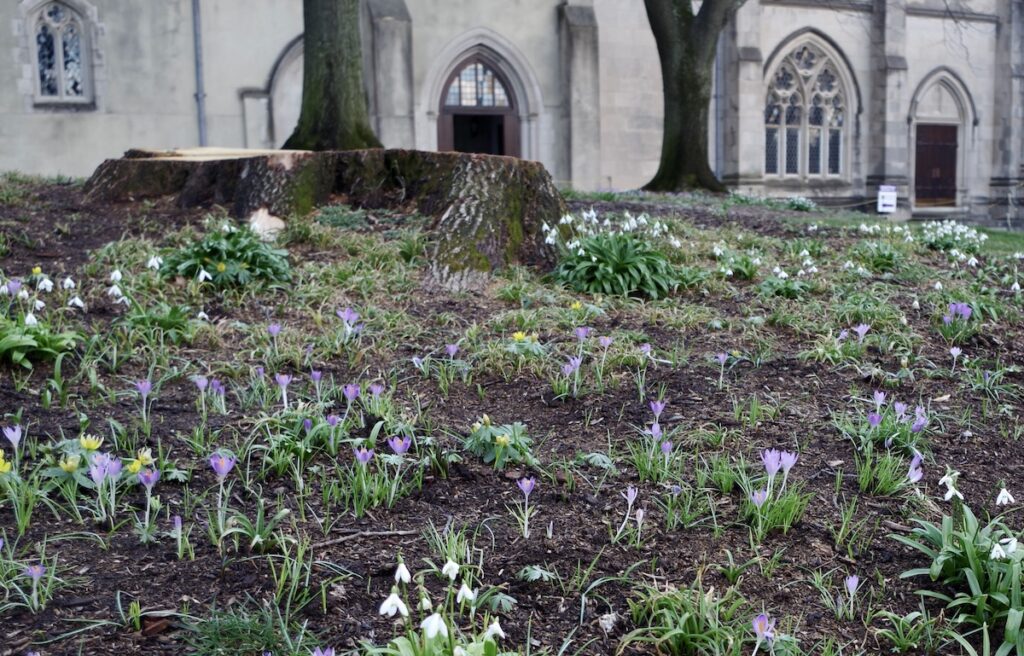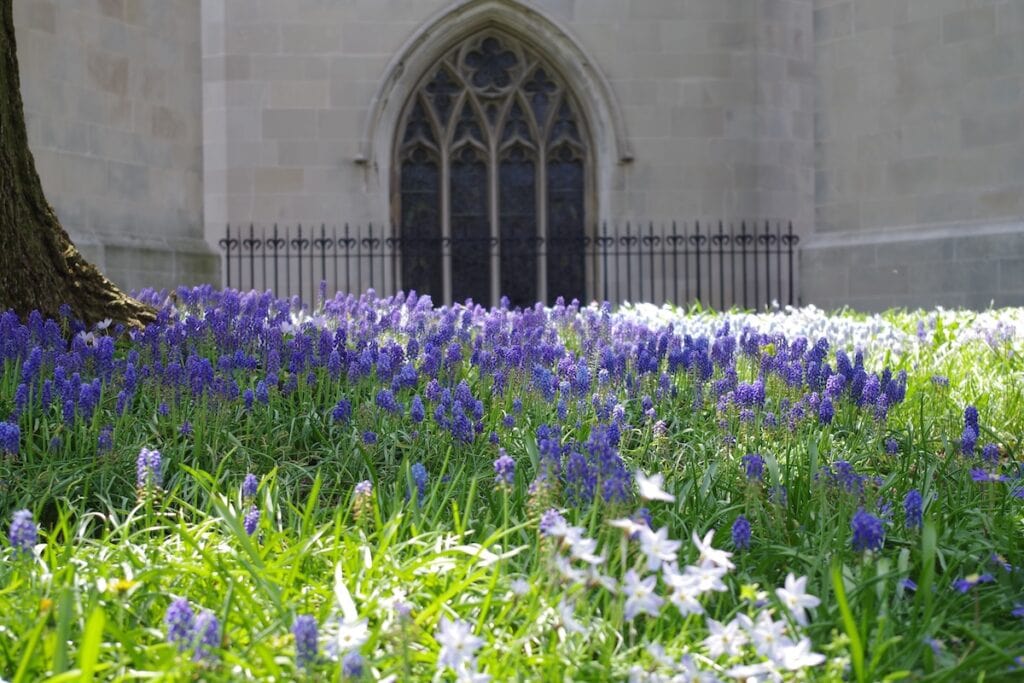December 21, 2023
After the loss of large Trees a new Plan
On the east end of the Cathedral, between the Apse and the Cathedral Library, 11 new oak trees (of three different species) have recently been planted. Several significant trees (two large white oaks and a yellowwood) that stood in this location were lost earlier this year. With these large trees now gone, we have taken fresh look at the space: how it has been used; what plants have survived and thrived; and how new plantings and hardscaping might enhance the area.


The newly planted trees are stage one of a redesign of the entire area – which we hope will incorporate seating areas, paths, and plantings. The current layout forces people wishing to use the tables and benches to walk through the plantings – creating soil compression as well as trampling the flowers. Our hope is to create an inviting space where nature and humans can coexist harmoniously.


Selecting Trees to Thrive
In selecting the trees to be planted, it was important to consider which species would tolerate the current conditions as well as the expected climate extremes of the future. Fungal disease, such as Oak Wilt has destroyed stands of large trees throughout the Midwest and Eastern United States. The warming climate and violent storms have also taken a toll on our trees. You can currently see evidence of that in our Olmsted Woods.


Oak trees are slow-medium growing trees that reach mature heights of 50 to 80 feet. Under optimal conditions they can have lifespans of up to 500 years. In order to give these new trees their best chance to reach maturity, three varieties were selected: overcup oak, Quercus lyrate; shumard Oak, Quercus shumardii; and swamp chestnut oak, Quercus Michauxii.
The New Plants

A distinct feature of the overcup oak, Quercus lyrata, is its acorn – which is almost completely covered by its cap. This white oak has a range native to the Southeastern United States. Overcup oak has the advantage of being resistant to oak wilt.

Shumard oak, Quercus shumardii, a North American native, is a member of the red oak group. Young trees have a pyramid shape, but as they age, their branches spread to a broad open crown. Shumard oak typically grows at a moderately fast rate to a height of 40-60′. Their red-brown fall color appears late in the season. This species is quite drought resistant and also withstands short-term flooding.

Swamp chestnut oak, Quercus michauxii, is a native species of white oak known also as basket oak, for the baskets traditionally made from its wood, and cow oak (where it grows near pastures cows enjoy eating the acorns). Swamp chestnut oak grows in a humid, temperate climate characterized by hot summers, mild and short winters, and no distinct dry season (sounds about right for DC!). Its sweet-tasting acorns will make it popular with birds and squirrels, although they will have to wait a bit – since the trees will not begin to produce acorns until they are 20-25 years old.
There are nearly 60 oaks native to the United States, with some native to very small ranges that illustrate just how diverse the genus Quercus truly is. Oaks can be found presiding over pastures, providing shade in urban parks and suburban neighborhoods, and thriving in natural stands in the United States and Canada. The White Oak is the state tree of Maryland.

The Next Steps
Eventually, the new trees will be underplanted with native plants to define where the turf ends and the garden bed begins. The grove is being planned to provide spaces for people alone or in small groups to relax, meditate, or converse.




